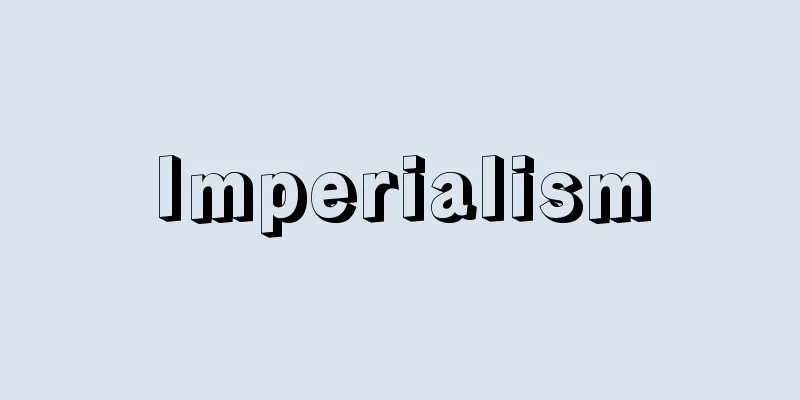Induction of labor - Induction of labor

|
This is a method of artificially inducing labor by administering a uterine contraction agent or mechanical stimulation such as artificial rupture of the membranes (artificial water rupture) to induce effective labor, and is also called the induction of labor. Note that when a similar method is used to increase uterine contractions and induce labor after labor has begun, it is called augmentation of labor. Obstetric and medical indications for induction of labor include severe pregnancy-induced hypertension, maternal complications (high blood pressure, diabetes, heart disease, renal disease, etc.) on the mother's side, premature rupture of membranes (when natural labor does not occur after the membranes rupture), post-term pregnancy, and mild cephalopelvic disproportion, and on the fetal side, blood type incompatibility, placental insufficiency, and habitual fetal death. Planned childbirth is also a social indication. Among the induction methods, the safest method with a high success rate is oral or intravenous administration of the uterine contraction agent prostaglandin followed by artificial rupture of the membranes. In recent years, the intravenous administration of prostaglandin F2α and oral administration of E2 tablets have become widely used, replacing the traditional intravenous infusion of oxytocin. Artificial rupture of the membranes may also be combined with pharmacological methods. When performing this procedure, it is important to determine whether the patient is in a state of preparation for delivery, as this has a high success rate. Continuous recording of the fetal heart rate curve and uterine contraction curve is essential, and maternal monitoring and general examinations are also required. Contraindications include previous surgery such as Caesarean section, severe cephalopelvic disproportion, fetal distress, abnormal fetal presentation, placenta previa, frequent parity, and a strong birth canal. [Masao Arai] Source: Shogakukan Encyclopedia Nipponica About Encyclopedia Nipponica Information | Legend |
|
子宮収縮剤を投与したり人工破膜(人工破水)などの機械的刺激を与えて有効な陣痛をおこさせ、分娩を人工的に誘発する方法で、陣痛誘発法ともいう。なお、分娩が始まってから同様な方法で子宮収縮を増強させ分娩へと誘導する場合は、陣痛強化とよばれる。 分娩誘発法の産科学的・医学的適応としては、母体側では重症の妊娠中毒症、母体合併症(高血圧、糖尿病、心疾患、腎(じん)疾患など)のほか、破水後自然陣痛がおこらない前期破水、過期妊娠、軽度の児頭骨盤不均衡などがあり、胎児側では血液型不適合妊娠、胎盤機能不全、習慣性胎児死亡などがあげられる。また、社会的適応として計画分娩もある。 誘発法のうち、成功率が大で安全な方法は子宮収縮剤のプロスタグランジンの経口投与または点滴静注と人工破膜法である。従来のオキシトシン点滴静注法にかわって、近年はプロスタグランジンのF2αの点滴静注法とE2錠の経口投与が広く用いられるようになった。また、人工破膜法に薬物学的方法を併用することもある。実施にあたっては、分娩準備状態にあれば成功率が高いので、その判定が重要である。胎児心拍曲線と子宮収縮曲線の連続記録が不可欠で、母体監視や一般検査を行う必要もある。 なお、禁忌としては帝王切開などの既往手術、重症の児頭骨盤不均衡、胎児仮死、胎位異常、前置胎盤、頻産婦、軟産道強靭(きょうじん)などがあげられる。 [新井正夫] 出典 小学館 日本大百科全書(ニッポニカ)日本大百科全書(ニッポニカ)について 情報 | 凡例 |
Recommend
Ottoman Turkish - Osman Turkish
In the Republic of Turkey, it is called Osmanlı T...
Lee, Bruce
Born: November 27, 1940, San Francisco, California...
Friedrich August III
… [Enlightenment and Immaturity] The state system...
Tokugawa Ietsuna
The fourth Shogun of the Edo Shogunate. The eldes...
codpiece
…Aristocrats also wore silk pouches called aumoni...
《Heptameron》(English spelling) Heptameron
…In his spare time from his busy official duties,...
Psychotomimetic drug
...However, other symptoms may occur to a lesser ...
Pachelbel
German organist and composer. He served as organis...
Gakuanji Temple
A Shingon Ritsu temple in Yamatokoriyama, Nara Pre...
Karl Stein (English spelling)
Born: October 26, 1757 in Nassau Died: June 29, 18...
Jean Antoine de Baïf
French poet. Born in Venice, Italy. A member of t...
Tomakomai [city] - Tomakomai
A city in central-southern Hokkaido. It was incorp...
Helix aspersa (English spelling) Helixaspersa
…[Minoru Muraoka]. … *Some of the terminology exp...
Troy Light
A mineral found in meteorites and iron meteorites...
common benefit
...Since ancient Greece, it has been one of the f...









